Welcome to Atlantic Transport News!
TAA is pleased to announce a new communications effort for our members and the general public – a monthly online summary of transportation news from around our region! This feature is intended to supplement our printed publication, The Bulletin, which is mailed to members twice a year, and also archived on our website. As Atlantic Canada’s leading advocacy voice for convenient, affordable and sustainable public transportation, by making news available on a more timely basis we’re also aiming to become the go-to source for up-to-date information.
MORE BLEAK NEWS IN AVIATION SECTOR – BUT ONE POSITIVE STORY
Faced with plummeting revenues and rising costs as a result of the COVID-19 pandemic, WestJet has drastically slashed its service offerings in Atlantic Canada. The airline announced on October 14 that it would be indefinitely suspending operations to Moncton, Fredericton, Sydney and Charlottetown, while significantly reducing service to Halifax and St. John’s. The decision eliminates more than 100 flights weekly or almost 80 percent of seat capacity from the Atlantic region starting November 2.
“It has become increasingly unviable to serve these markets,” said WestJet CEO Ed Sims. “Since the pandemic’s beginning, we have worked to keep essential air service to all of our domestic airports, however, demand for travel is being severely limited by restrictive policies and third-party fee increases that have left us out of runway without sector-specific support.”
Mr. Sims’ statement clearly pointed the finger of blame at the “Atlantic Bubble” which has been widely credited by both epidemiologists and the general public for the low rate of virus infection throughout the region.
In announcing the unwelcome news, the company noted with some justification that they have successfully brought competition and lower fares to the Atlantic region through new service and routes, while driving tourism and business investments. As of 2019, the airline had added more than 700,000 annual seats to the region since 2015, while creating the opportunity for travel to, from and within the region on 28 routes. The airline said it has also worked to grow Halifax as the Atlantic gateway to Europe through the introduction of successful nonstop transatlantic service to London-Gatwick, Paris, Glasgow and Dublin.
“We understand this news will be devastating to the communities, our airport partners and the WestJetters who rely on our service,” Mr. Sims acknowledged. “While we remain committed to the Atlantic region, it’s impossible to say when there will be a return to service without support for a coordinated domestic approach. Our intent is to return as soon as it becomes economically viable to do so.”
As of November 2, the only remaining WestJet service to or from Atlantic Canada is Halifax-Toronto twice daily, Halifax-Calgary nine times weekly, and 11 weekly Halifax-St.John’s turboprop flights.
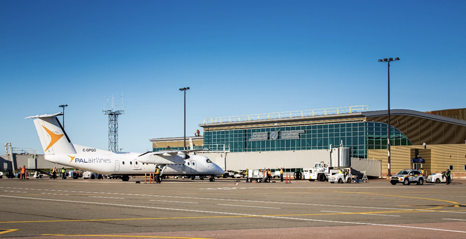
On a more positive note, St. John’s-based PAL Airlines is encouraged by the response to its new direct service between St. John’s and Moncton. The Dash-8 flight launched on September 21, and operates five days a week.
Janine Browne, PAL’s director of business development and sales, says they are pleased with passenger numbers using the service so far in comparison to their forecast for the ramp-up period, and are looking forward to continuing to grow this volume in the coming months. A minor and short-lived Coronavirus outbreak in Moncton put the area back in the orange alert level for two weeks and had a brief negative effect on traffic growth. However, bookings recovered swiftly when the COVID threat subsided.
The airline has declined to release ridership figures. However, the service concept is apparently proving attractive to passengers who are uneasy about flying during the pandemic. Because the routing is point-to-point within the Atlantic Bubble and avoids major hubs, the risk of sharing the cabin with international travellers or those from outside the region who may have been exposed to the virus is quite low.
PAL has plans to expand the service to Ottawa once Atlantic region travel restrictions have been lifted.
MARITIME BUS RUNNING EXTRA SERVICE FOR HOLIDAY SEASON
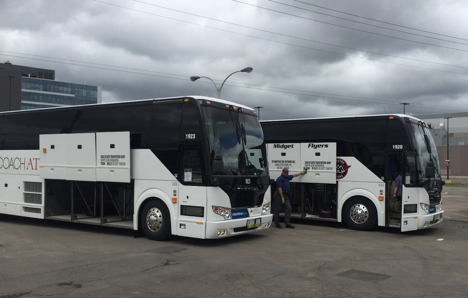
Although Maritime Bus has still not reached the point where it is ready to resume its full operating schedule, the intercity carrier has announced that it will offer additional service on all its routes during the Christmas and New Year holiday period. Beginning on Sunday, December 20, and running through until Wednesday, January 6, daily schedules will be maintained throughout the three Maritime provinces to meet the needs of travellers over the festive season. The one exception will be Christmas Day, when none of the routes will operate.
Mike Cassidy, owner of Maritime Bus/Coach Atlantic, says the passenger volume on the four days each week that all the main routes are currently operating is still not strong enough to support full-time daily operation. System-wide ridership at the end of October was ranging between 250 and 300 per day – encouraging, but not yet enough to justify service seven days a week.
“Every day I reassure myself that I made the right decision to keep going through the pandemic,” Mr. Cassidy says, “yet looking strictly at the financial results I sometimes do have some doubts.”
He remains optimistic about the longer term, however. And even amid the pandemic he’s particulsrly upbeat about the Charlottetown area transit service T3, which he operates under contract to the City. T3 marked its 15th anniversary on September 30, and now boasts a 50% load factor – well above the national average for transit systems.
PUBLIC TRANSIT GETS CLOSER TO NORMAL; SOME GOOD NEWS IN NB
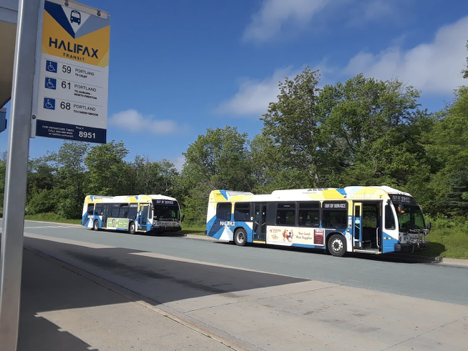
The evident success of the Atlantic Bubble in keeping COVID-19 at bay seems to be helping public transit throughout the region along the road to recovery. As of October 26, Halifax Transit was reporting that all conventional and express bus routes were running on their regular schedules, and with mandatory mask use all buses were utilizing their full seated capacity. The situation at Metrobus Transit in St. John’s was similar. Most transit agencies have now resumed fare collection, which had been largely suspended for a considerable duration earlier in the pandemic period – contributing further to their financial woes.
In New Brunswick, the three largest cities at last received the news they’d been hoping for. The provincial government, which had earlier declined to participate in a shared-cost transit relief program with Ottawa, finally announced on October 30 that a $1.6-million agreement had been reached. The funding is being distributed based on COVID-related impacts, with Fredericton receiving the largest share at $670,000. Moncton gets half a million, while Saint John will receive $400,000. The money is expected to be forthcoming in early November.
Premier Blaine Higgs, who had earlier attracted criticism from both advocates and municipal politicians for his apparent dismissive attitude toward public transit, is now suggesting he’d be receptive to further requests by cities for reimbursement of pandemic-related expenses.
PASSENGER RAIL NOT AN OPTION FOR MARITIME CHRISTMAS TRAVELLERS
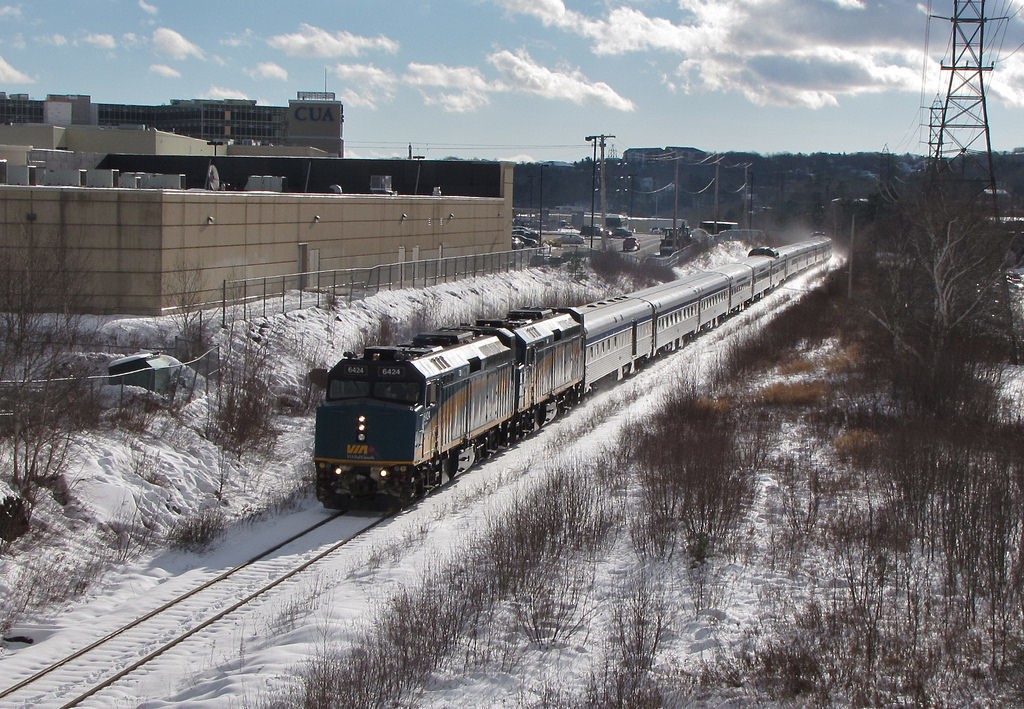
Once again, the return to service by VIA Rail’s Ocean has been further postponed. The Crown corporation has now confirmed that all reservations up to and including December 31 are being cancelled, and refunds issued to customers. Furthermore, an embargo has been placed on any further bookings for January and February 2021, but the company still says a return to service before March remains a possibility.
While VIA doesn’t specifically blame the latest postponement on the existence of the “Atlantic Bubble”, a corporate source does acknowledge that it presents a major challenge. The Ocean originates in Montreal where the COVID-19 infection rate is still increasing at an alarming rate, and enters the Atlantic region near the small northern New Brunswick city of Campbellton. Because there is a mandatory two-week self-isolation requirement for everyone entering any of the four easternmost provinces from elsewhere in Canada, the boundary crossing could get quite complicated – especially given that the train makes multiple stops on either side of the dividing line.
When the Ocean does return it won’t be the same as it was before the pandemic. With the loop track at the Halifax container terminal no longer available to turn the train, it will be necessary to move the locomotives around to what would normally be the rear and run the consist backwards on its return journey to Montreal. VIA says the exact form the train will take hasn’t been finalized, but one casualty will definitely be the iconic domed observation car that has graced the tail end for the past three decades, and has been a major attraction for higher-revenue sleeper-class passengers.
TSB RELEASES REPORT ON NEWCASTLE SUB VIA DERAILMENT
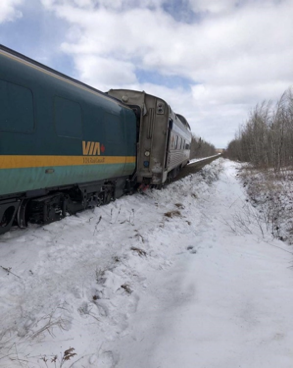
The consequences easily could have been much more serious for passengers and crew aboard VIA train 14 on the early afternoon of April 4, 2019. The 14-car eastbound Ocean was proceeding towards Moncton at the permissible track speed of 60 miles per hour when the last two cars went on the ground because of a broken rail at mile 15.27 of CN’s Newcastle Subdivision. There were no serious injuries, but there was significant damage to track and equipment. The results of a Transportation Safety Board investigation into the incident were released on September 30.
The TSB found that a deteriorated length of rail at a public grade crossing, that had gone undetected when a hi-rail inspection vehicle had passed over it hours earlier, had collapsed under the weight of the train. Ultrasonic and track geometry inspections in the previous six months had also failed to identify the defect. The investigators found that the web (vertical portion) of the rail that fractured had thinned due to corrosion to a point where it could no longer support normal train forces, but had remained undetected because it was hidden by the crossing surface.
As the locomotives travelled over the crossing, the operating crew experienced rough track conditions. Seconds later, they received a radio call from the service manager, who was located in the fourth car, reporting that there had been a hard impact. But it wasn’t until the train unexpectedly slowed after crossing the bridge at mile 14.9 that they realized the last two cars had derailed and immediately made an emergency brake application. Fortunately the derailed cars remined upright throughout, and the five passengers and one crew member in the Park-series dome car did not suffer any serious injury. The VIA employee, however, had become separated from his radio, and was unable to immediately contact the head end. The other derailed car was an unoccupied Renaissance “transition car.”

Note the damage to the bridge deck caused by the accident.
Early in its investigation, the TSB issued this Rail Safety Advisory regarding effective and consistent rail condition monitoring practices at railway crossings:
“Given the challenges with detecting rail defects at railway crossings, Transport Canada may wish to review how rail condition monitoring is performed at railway crossings and provide guidance (as necessary) to ensure that these inspections are conducted in an effective and consistent manner.”
The full TSB report can be found here:
https://www.bst-tsb.gc.ca/eng/rapports-reports/rail/2019/R19M0018/R19M0018.html




